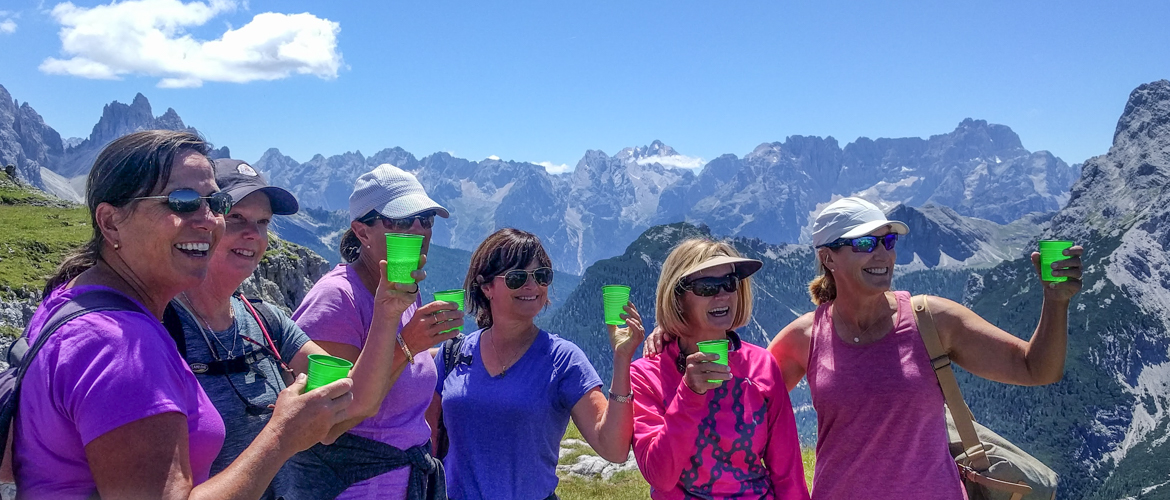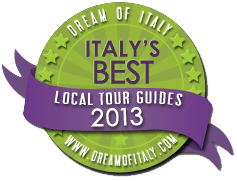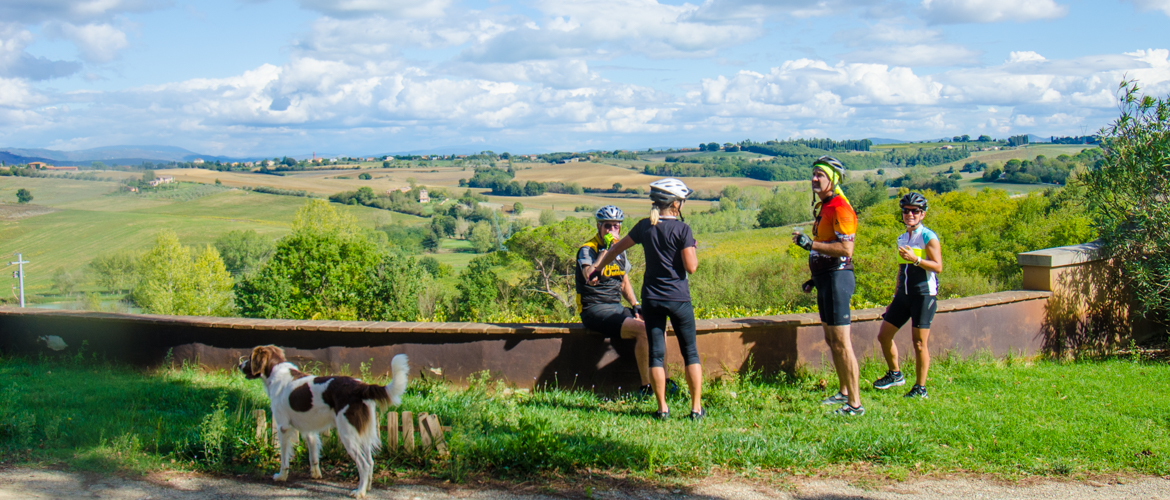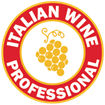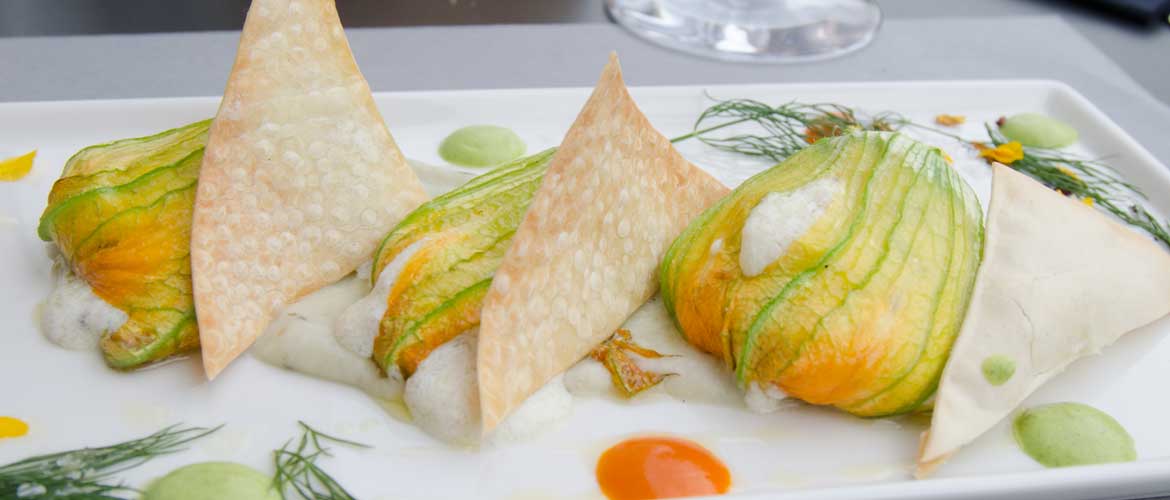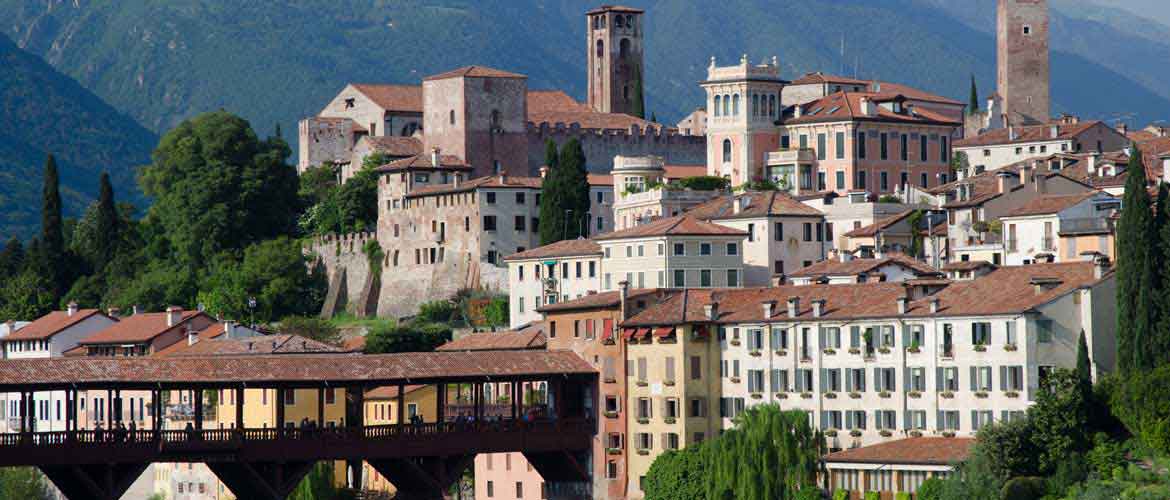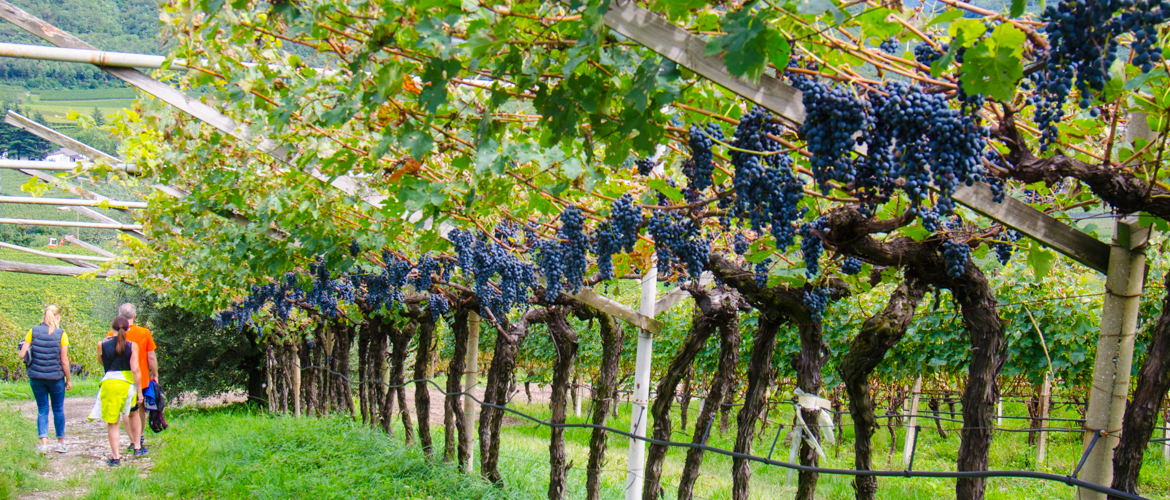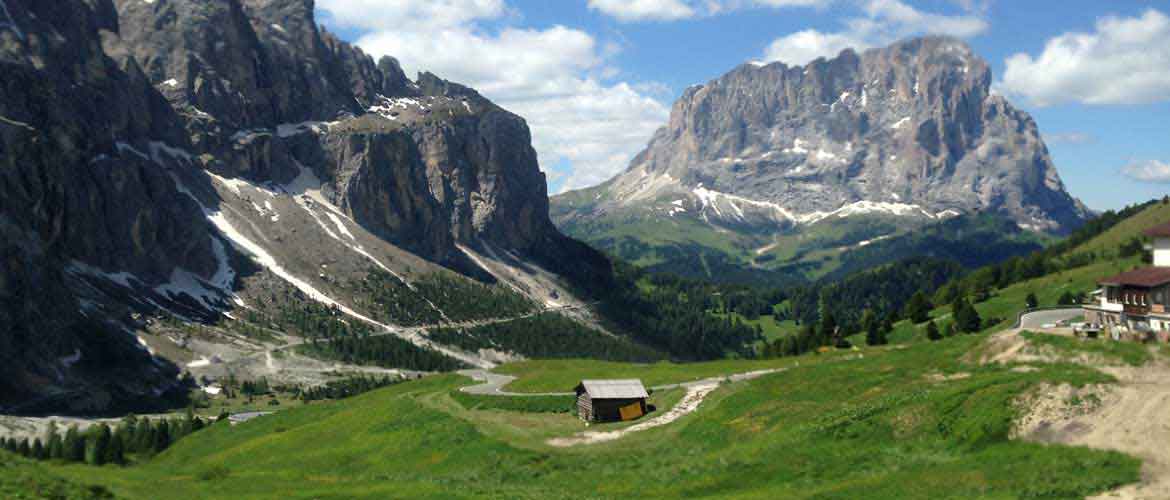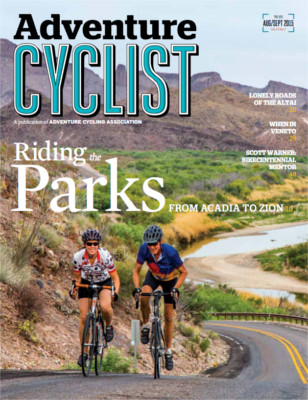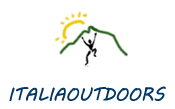Tourists know Liguria as the Italian Riviera, famous for its beaches and the resort towns of Portofino and Cinque Terre. The region of Liguria forms a narrow coastal strip in northwestern Italy, bordered by France to the west, the region of Piedmont to the north, Tuscany to the east, facing the Ligurian Sea all along the south. Its capital and largest city is Genoa (Genova). The wines of Liguria are not well known outside the Riviera as its production is quite small, second only to tiny Valle d’Aosta. It has no DOCGs, eight DOCs, and four IGPs. Liguria produces mostly white wine. The region’s primary grape varieties are Vermentino, Pigato (a biotype of Vermentino), and Rossese.

The vineyards of the Italian Riviera are majestic terraced slopes that plunge into the Mediterranean sea in the Cinque Terre, occupying a truly maritime environment. While spectacular, the terrain is extremely difficult to work efficiently and safely. Harvest is done by hand, with the help of monorail systems to move the grapes up the hills.
Winemakers in the Cinque Terre are driven by passion, not money. The steep hillsides do not allow for any mechanical assistance, except for small monorail carts which are few and far between. All of the work - pruning, harvest, transport to the carts - must be done by hand. Unlike other wine regions, the wine is produced in the villages, not in the vineyards, so the grapes must be gently transported to the nearest road, loaded onto vehicles which then transport them down the the villages. The wines are obscure, relatively expensive and hard to find on the international market, so there is not a lot of promise for financial success. But wine production is an important tradition in Liguria, and these growers proudly carry on, in spite of the difficulties presented by their rugged, yet lovely terrain.
A few of the varietals and types of wines found in Liguria:
Albarola
A white indigenous varietal, grown mostly in Cinque Terre and La Spezia. A fairly neutral grape, most commonly blended with other Ligurian varieties such as Bosco and Vermentino.
Albarola is found in the following areas: Colli di Luni DOC, Colline di Levanto DOC, IGP Colline del Genovesato, IGP Colline Savonesi, IGP Liguria di Levante, Val Polcèvera DOC
Bosco
Bosco is a white indigenous varietal that is grown predominantly in Cinque Terre where it is often the primary component of a blend. It gives structure and richness to the region's crisp, aromatic white wines, which also contain Vermentino and Albarola. Bosco is rarely vinified as a varietal wine. Care must be taken in handling due to Bosco's propensity to oxidize easily, creating potential wine faults. The wines are therefore best consumed within a year or two of harvest.
While Bosco is important in the region's dry white wines, it is also a key component in the Cinque Terre's sweet Sciacchetrà wines, which are made in the passito style from air-dried grapes.
Bosco is found in the following areas: Cinque Terre / Cinque Terre Sciacchetrà DOC, IGP Colline del Genovesato, IGP Colline Savonesi, IGP Liguria di Levante
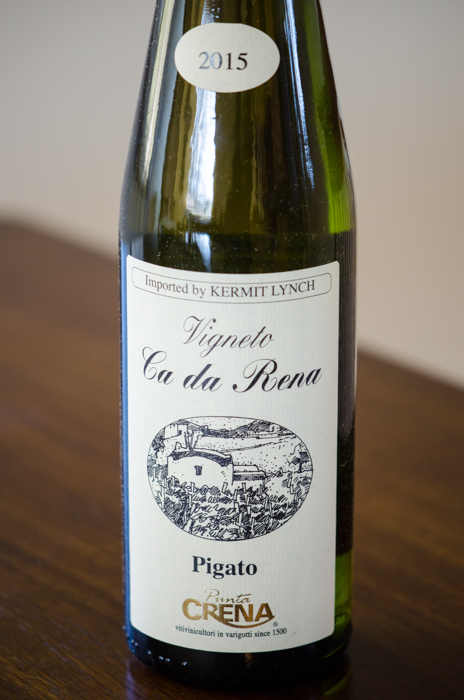
Pigato
Pigato is another white indigenous varietal, which has been proven by DNA analysis to be the same varietal as Vermentino and Piedmont’s Favorita. Its name, Pigato, means “spotted”, due to the freckled appearance of the ripe grapes. The grape makes sturdy, aromatic wines with plenty of fruit.
Pigato is found in the following areas: IGP Colline del Genovesato, IGP Colline Savonesi, IGP Liguria di Levante, IGP Terrazze dell’Imperiese, Riviera Ligure di Ponente DOC
Rossese
Rossese is the red indigenous varietal that is grown around Dolceacqua and Ventimiglia. Located in the Imperia province, these two communes sit at the very western edge of the Italian Riviera, on the border with France. Rossese has been an important grape here since it arrived from Provence, just over the border to the west. Rossese wines are brightly colored with a fresh, tangy palate, along with notes of blackcurrant and herbs.
Rossese is found in the following areas: IGP Colline del Genovesato, IGP Colline Savonesi, IGP Liguria di Levante, IGP Terrazze dell’Imperiese, Riviera Ligure di Ponente DOC, Rossese di Dolceacqua / Dolceacqua DOC
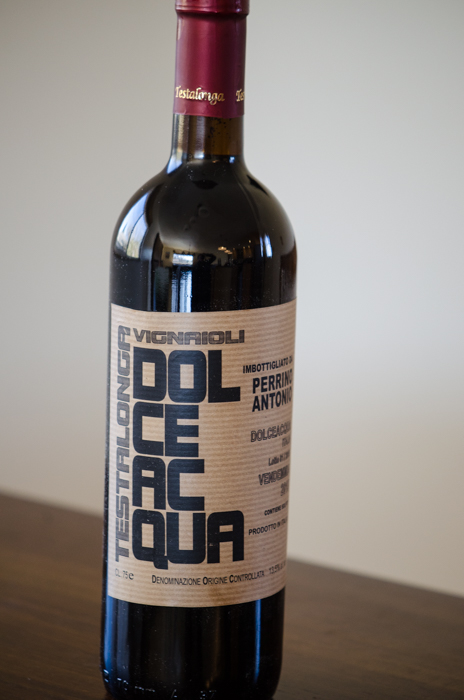
Vermentino
Vermentino is Liguria’s most widely planted grape, a white indigenous varietal also grown in Sardegna and Tuscany. Biotypes include Liguria’s Pigato and Piemonte’s Favorita. Wines produced from Vermentino grapes typically display flavors and aromas of citrus, tropical fruit, acacia, rosemary, thyme with a salty finish.
Vermentino is found in the following areas: Colli di Luni DOC, Colline di Levanto DOC, Golfo del Tigullio–Portofino / Portofino DOC, IGP Colline del Genovesato, IGP Colline Savonesi, IGP Liguria di Levante, IGP Terrazze dell’Imperiese, Riviera Ligure di Ponente DOC.
Styles of Wine
Sciacchetrà
Sciacchetrà is the sweet, white passito wine produced on Liguria's dramatic Cinque Terre coastline. Passito is an Italian word for wines made by the appassimento process in which, after picking, the grapes are laid carefully on pallets (traditionally straw mats, but now typically plastic) in ventilated barns in order to dry, essentially becoming almost raisins. As the grapes shrivel and lose water they become full of concentrated sugars and flavors. After three to six months the semi-dried grapes are gently pressed and the juice fermented until it reaches the desired level of sweetness and alcohol. Most passito wines will spend some time aging, often in oak barrels to develop additional flavors and complexity in addition to time resting in the bottle prior to release for sale. Italian wines made in the passito style include both red and white wines.
Bosco, Albarola and Vermentino grapes are used to make Sciacchetrà. Once picked and transported to the winery - which in Liguria is carried out by hand and transport is done a specially adapted monorail system - the grapes are left to dry on well-ventilated racks until the concentration of natural sugars reaches a potential alcohol level of at least 17%. This process ensures intense, sweet flavors in the resulting wine, which is deliberately left with significant residual sugar and alcohol level.
Sciacchetrà wines are intensely golden-yellow in their youth, changing to amber over the years. They offer aromas of honey and white blossoms, with hints of citrus. Sciacchetrà Riserva has been aged for three full years prior to release. There is no stipulation as to whether this aging must take place in stainless steel, glass or oak.
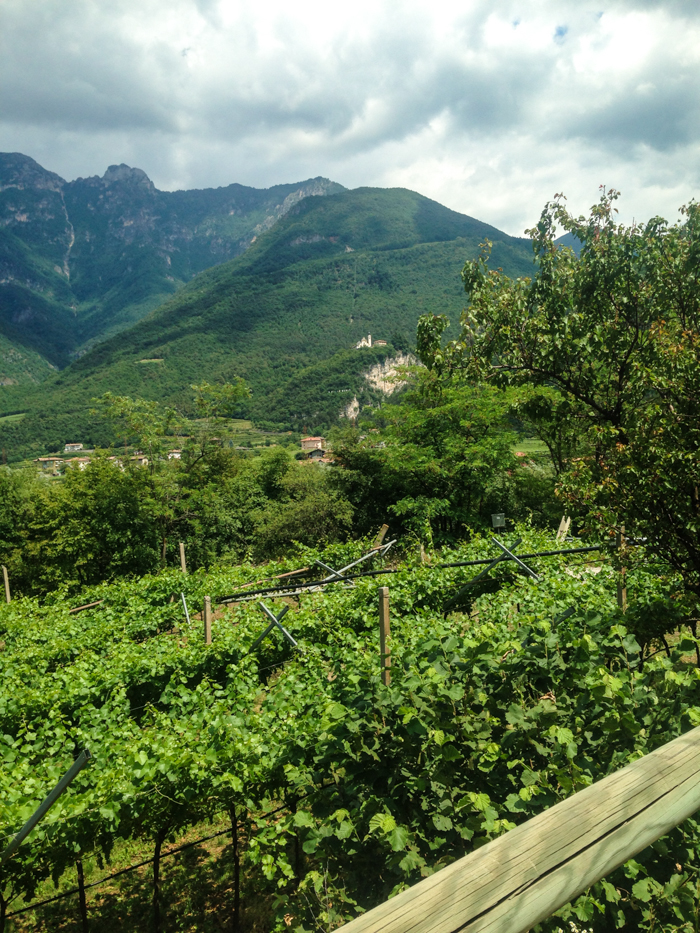
The region of Lombardia lies in the north of the country, sharing a border with Switzerland. It is one of the largest regions in Italy, and boasts a wide range of landscapes - from the Alps where we can visit Bormio on a Italy ski tour in the winter or a cycling tour of Stelvio in the summer, to the charming lakes - Como, Maggiore, Iseo and the western side of Lake Garda, to the plains of the Po Valley, home to the region’s favorite risotto rice. This region is an eclectic mixture of history, culture, and nature juxtaposed with industry, style, technology and fashion.
But in spite of its position as Italy’s most productive farming region, Lombardy is not a large wine producer. The wines it does produce, however, can rival the best wines in Italy: the Champagne style sparkling wines from Franciacorta, the fresh and crisp whites from Lugana on Lake Garda, and full bodied robust Nebbiolo based reds from Valtellina. The wines here present great variety and character, styles both traditional and modern, as well as native and international grape varieties.
Some of the better known wine regions in Lombardia:
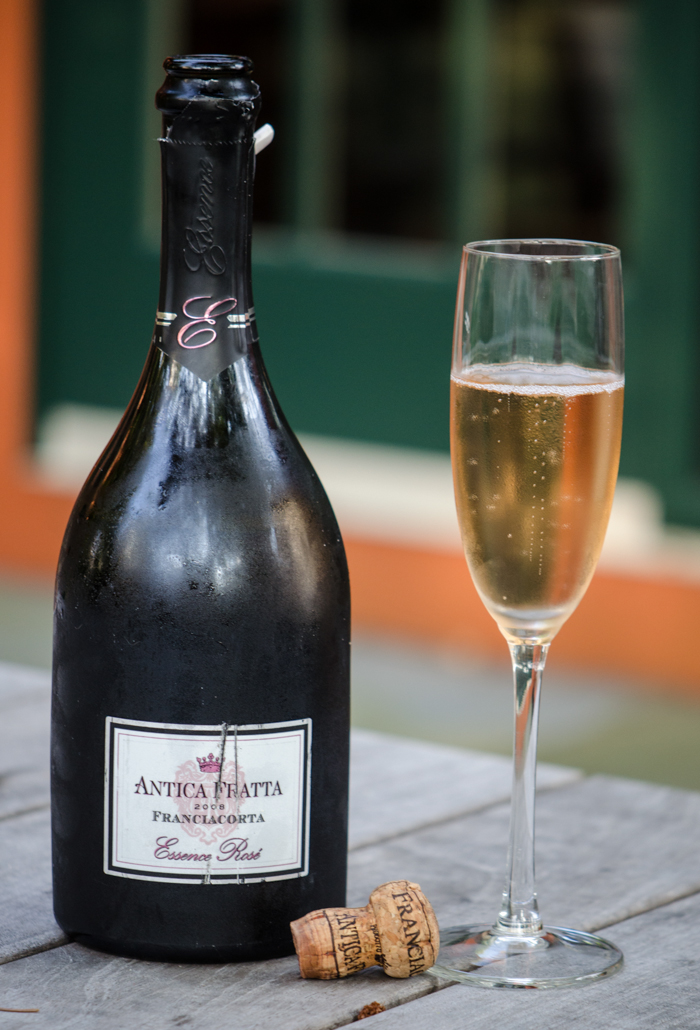
Franciacorta
Located in the rolling hills just south of Lake Iseo, this small zone produces a sparkling Champagne style wine earning a world class reputation. Chardonnay, Pinot Nero and Pinot Bianco grapes cultivated in only the best vineyards in this region are blended, and a sparkling wine produced in the ‘metodo classico’, or méthode Champenoise style, where the secondary fermentation occurs in the bottle. Aging and dosage levels for Franciacorta DOCG wines are on par with that of Champagne.
The Curtefranca DOC, formerly known as Terre di Franciacorta, applies to the still reds and whites produced in this same area. The whites are Burgundy style blend of Chardonnay, Pinot Nero and Pinot Bianco; the rosso can include some very interesting blends of both international varietals like Cabernet Sauvignon and Franc with natives Nebbiolo and Barbera.
Oltrepò Pavese
Just south of Milan, along the Po River, Oltrepò Pavese is the largest producing wine region in Lombardia. This region has a long tradition of wine making, as it was ruled for centuries by the House of Savoy who also ruled Piedmont. Today it produces a wide array of styles, over 20 in all are included in the DOC regulataions. One of the first regions in Italy to cultivate Pinot Nero, most of the production used to be sold off in bulk. Nowadays, you can find Pinot Nero here used to produce a metodo classico sparkling wine, as well as still, dry, and barrell aged wines. Barbara, as well as a native varietals, Croatina, also known as Bonarda, and Uva Rara, are used in the region’s red and rosé wines as well as lightly sparkling reds.
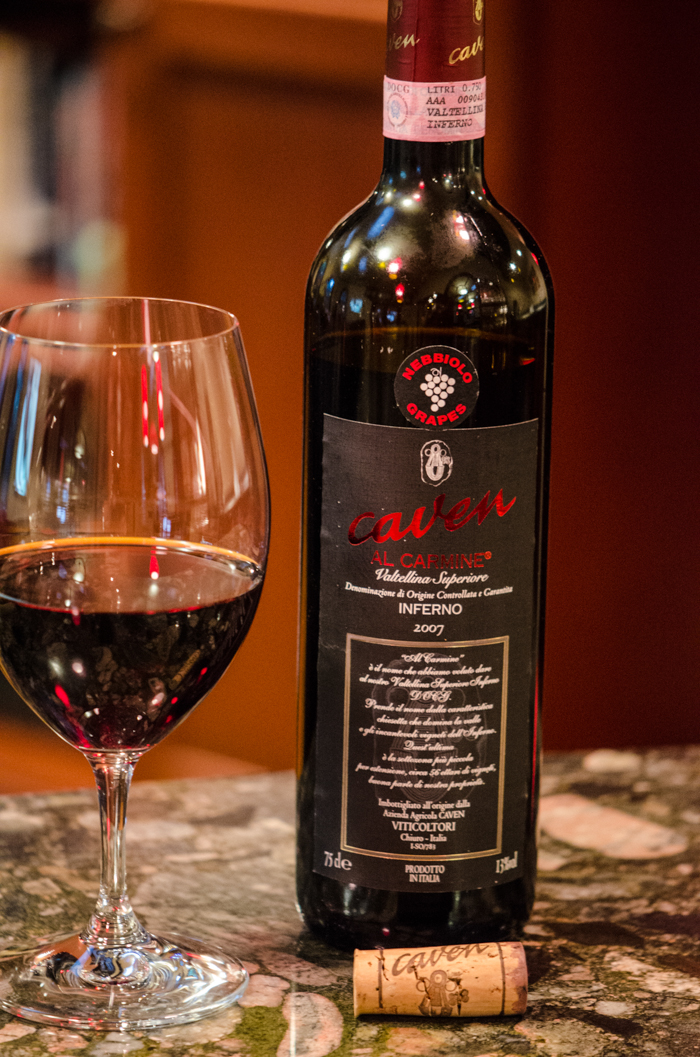
Valtellina
The most prestigious zone in Lombardia for red wine production is Valtellina. Located along the Adda river along Lombardia’s northern border with Switzerland, the steeply terraced vineyards here defy the use of any mechanization, except for the use of baskets on cables to haul grapes down from the most precipitous locations. Valtellina has both a DOC and a DOCG for its wines which must contain 90% Chiavennasca grapes (the local name for Nebbiolo). The Nebbiolos here differ from the Barolos and Barbarescos from Piedmont, due to the very different climate here. Nebbiolos from Valtellina are lighter and more feminine.
Some producers are using the passito, or appassimento, method of drying grapes to produce a wine with a more concentrated flavor profile, the same method used to produce Amarone. Here, these wines are referred to as Sforzato di Valtellina or Sfursat, and definitely worth searching out on any visit to this region.
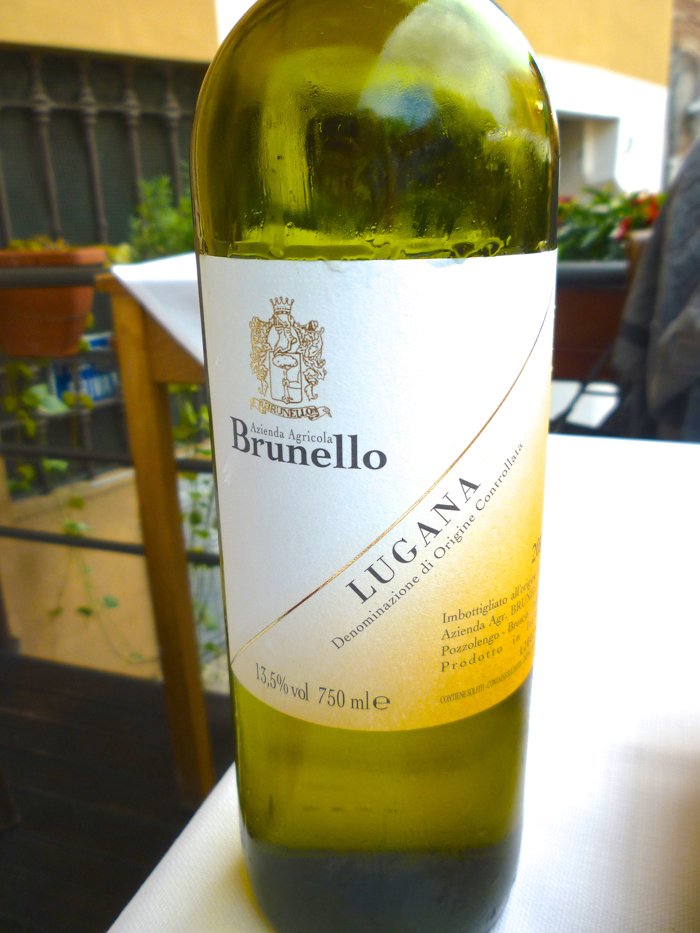
Lugana
Yet another picturesque wine zone we visit often, as the Lugana zone lies both in Lombardia and the Veneto. Located on the southern shores of Lake Garda, the vineyards stretch alongside lovely lakeside resort towns such as Desenzano, Sirmione and Peschiera. Here, as we enjoy dining on fresh lake fish, we find some truly fabulous white wines, made with a superior subvariety of Trebbiano called “trebbiano di Lugana”, or “trebbiano di Soave” in nearby Soave DOC. You will also find Garganega based whites here as well. Chiaretto is another traditional wine of Lake Garda, a spicy rose, some sparkling, some still, made with a local blend of Groppello, Marzemino, Barbera and Sangiovese grapes.
The DOC Zones of Lombardia
DOCG
Franciacorta
Oltrepò Pavese Metodo Classico
Scanzo
Sforzato di Valtellina
Valtellina Superiore
DOC
Botticino
Capriano del Colle
Cellatica
Casteggio
Curtefranca
Garda
Garda Colli Mantovani
Lambrusco Mantovano
Lugana
Oltrepò Pavese
Riviera del Garda Bresciano
San Colombano al Lambro
S. Martino della Battaglia
Scanzo
Terre del Colleoni o Colleoni
Valcalepio
Valtellina Rosso
Valtenèsi
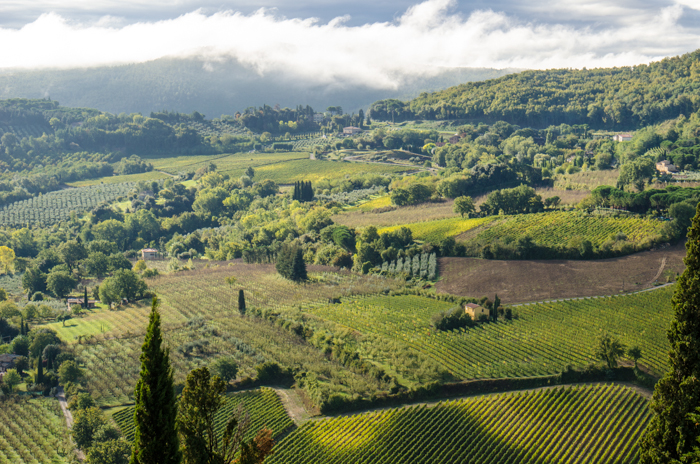
Non-Italians, when asked to name an Italian wine or wine area, will probably name Chianti, and Tuscany. This is primarily to due to the fact that Chianti from Tuscany was the first wine from Italy to receive widespread international awareness. This renown has been a double-edged sword, as Chianti for a time did not have a stellar reputation in the wine world. Chianti is no longer simply the bulk wine exported in vast quantities in straw-covered flasks. The Chianti region is now a vital producer of premium wines, and the creation of wine in Tuscany has expanded from the central hills around Florence and Siena to include the hills to the south, and even the strip of Tuscany that lies along the Mediterranean coast, the Maremma. Today, Tuscany boasts over 30 DOC zones, and 6 DOCG zones, making one of the most highly regarded wine regions in Italy.
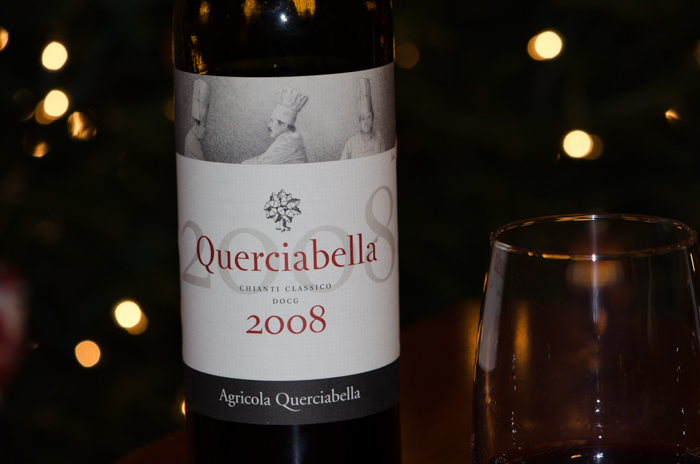
Chianti is now produced in eight different subzones in an area that covers much of central Tuscany. The variations in terrain, and the personalities of many different winemakers result in a wide variety of styles of wine. Chianti is produced from the major grape variety of Tuscany, Sangiovese. Most Chianti is fresh and easily drinkable, but many are becoming more elaborate and elegant with age.
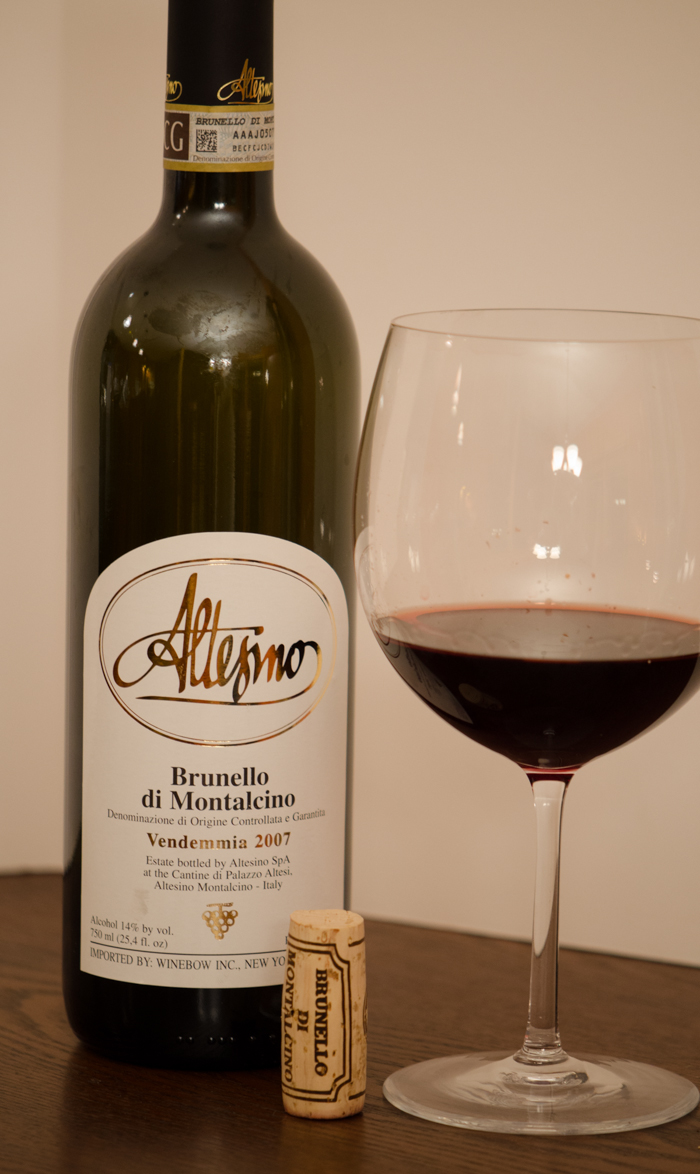
The Brunello di Montelcino DOCG is arguably Tuscany’s preeminent wine region. It was the very first wine zone in Italy to be awarded the higher quality DOCG status in 1980. Also based primarily on the Sangiovese grape, they are typically a bit more robust and full-bodied than a Chianti. Producers in this region also make a younger wine from Sangiovese, the Rosso di Montalcino, a sweet white Moscadello di Montalcino and a range of wines that carry the appellation Sant’Antimo.
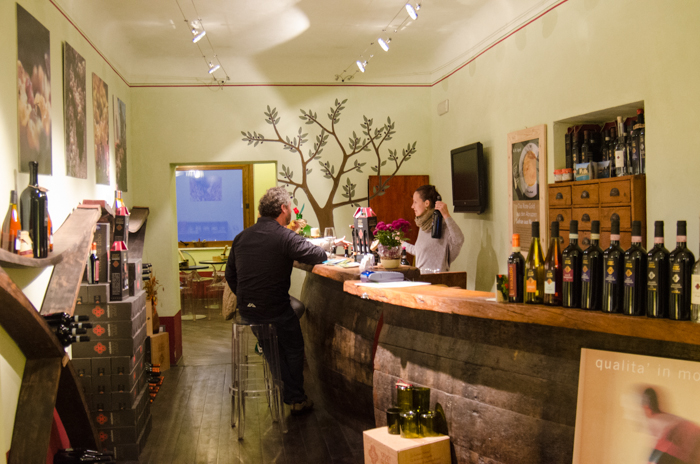
Not far from Montalcino is Montepulciano, another wine zone with DOCG status, with its Vino Nobile. Vino Nobile di Montepulciano wines are made from a clone of Sangiovese known as Prugnolo Gentile. Here as well you will find younger alternatives produced under the DOC Rosso di Montepulciano.
Carmignano is another DOCG zone, located on the slopes of Monte Albano just west of Florence. This rare red is a blend of Sangiovese and Cabernet.
The only DOCG in Tuscany devoted to the production of a white wine is the Vernaccia di San Gimignano, produced in the hills surrounding the medieval town of San Gimignano. This is a dry, crisp white with a characteristic bitter finish produced from the Vernaccia grape. There are other regions in Italy that produce a Vernaccia wine, such as Sardinia and Marche, but the vernaccia grapes used in Tuscany are a different varietal.
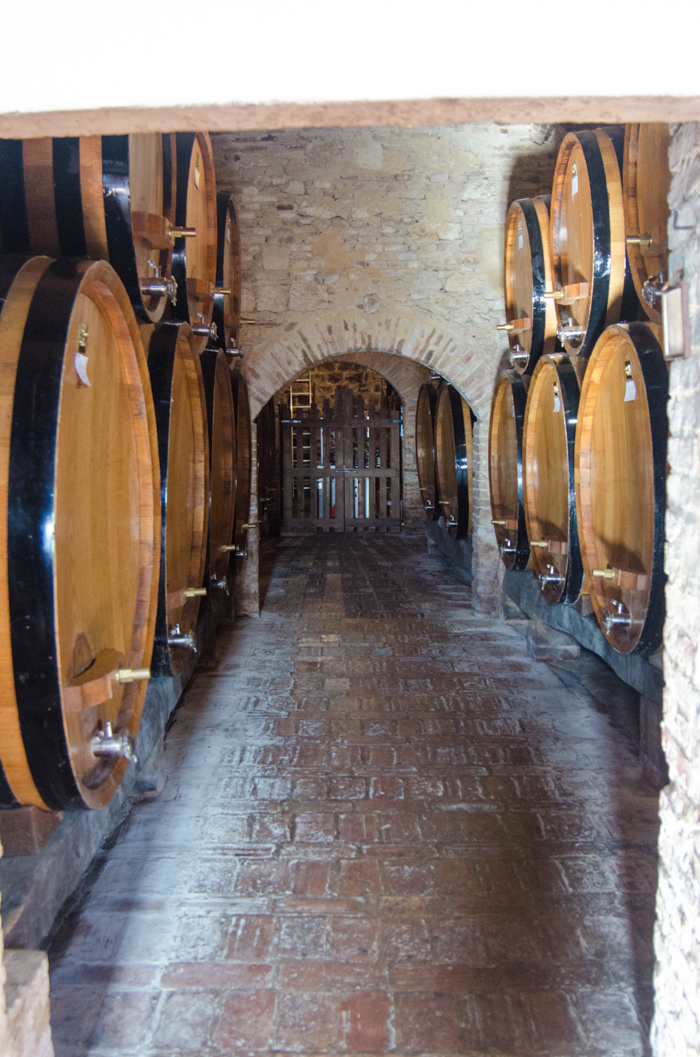
The Wine Zones of Tuscany
DOCG
Brunello di Montalcino
Carmignano
Chianti
Chianti Classico
Vernaccia di San Gimignano
Vino Nobile di Montepulciano
DOC
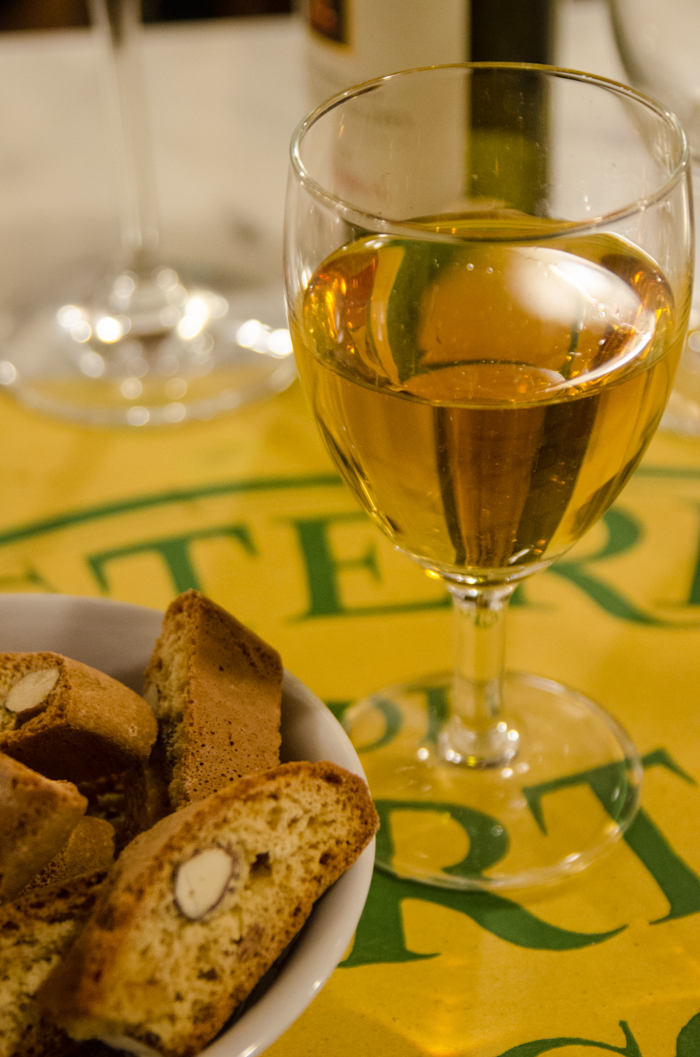
Ansonica Costa dell'Argentario
Barco Reale di Carmignano or Carmignano
Bianco della Valdinievole
Bianco dell'Empolese
Bianco di Pitigliano
Bianco Pisano di San Torpè
Bolgheri or Bolgheri Sassicaia
Candia di Colli Apuani
Capalbio
Colli dell'Etruria Centrale
Colli di Luni
Colline Lucchesi
Cortona
Elba
Montecarlo
Montecucco
Monteregio di Massa Marittima
Montescudaio
Morellino di Scansano
Moscadello di Montalcino
Orcia
Parrina
Pomino
Rosso di Montalcino
Rosso di Montepulciano
San Gimignano
Sant'Antimo
Sovana
Val d'Arbia
Valdichiana
Val di Cornia or Val di Cornia Suvereto
Vin Santo del Chianti
Vin Santo del Chianti Classico
Vin Santo di Montepulciano
Understanding Italian Wines
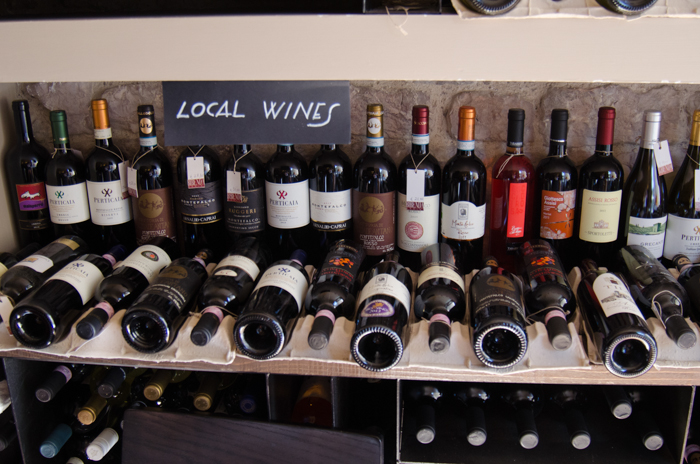
While browsing in any US liquor store in the Italian wine section, I often see other shoppers totally mystified by the label on a bottle of wine from Italy. We are accustomed to selecting our wines via the type of grape (varietal), which on wines produced here in the US is front and center - Cabernet, Merlot, Pinot Grigio. Italian wines are labelled quite differently, and can be difficult, especially when unfamiliar with the language, to tell what is what - producer, location, region, varietal. Guests on our private Italy tours are both fascinated and frustrated with the sheer number of new wines to explore. But we discover together during our week that there is some method to all of this madness, and our clients leave with a great appreciation for the long history and traditions behind wine production in Italy.
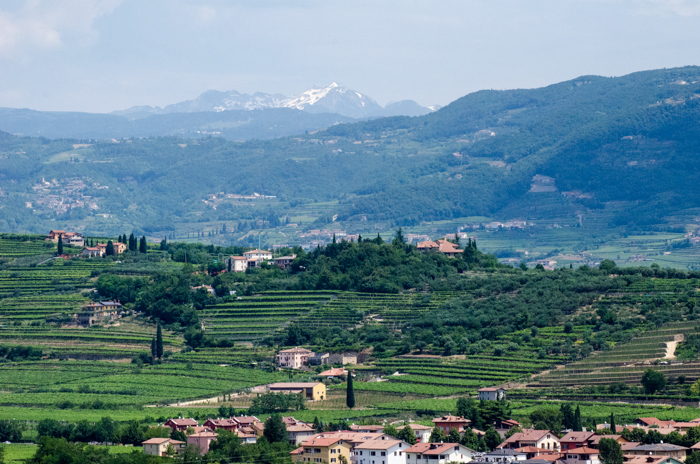
Let’s begin with the geography of Italy. This odd, boot shaped peninsula is immediately recognizable. Surrounded by water, this narrow peninsula is only 150 miles across at it’s widest point. With the Alps across the north, and the Apennines Mountains extending down the middle along the length of the peninsula, you find vast changes in terrain across a very short distance. You can drive from the flat river deltas of the Adriatic coast to the majestic peaks of the Dolomites in a few short hours. (This makes it a fantastic destination for our custom active tours.) These rapid changes in terrain create a multitude of micro climates; according to Wikipedia, a micro climate is a local atmospheric zone where the climate differs from the surrounding area. The term may refer to areas as small as a few square feet (for example a garden bed) or as large as many square miles. Italy possesses a much higher density of micro climates than the vast majority of the US.
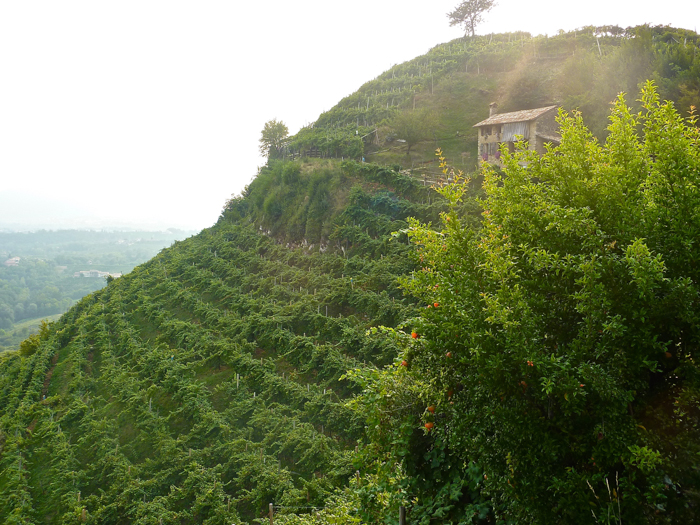
The history of civilization on the Italian peninsula is ancient, and wine production has been ongoing here for over 4000 years. Throughout this history, even to modern times, wines were produced from the grapes that were grown in your own backyard. As your backyard might have a different micro climate than the next estate over, you might well be growing a different type of grape than your neighbor. The result, over thousands of years, is now over 1000 different varietals are grown in this small country. So prepare yourself for an amazing number of grape varietals that you don’ t see here in the US.
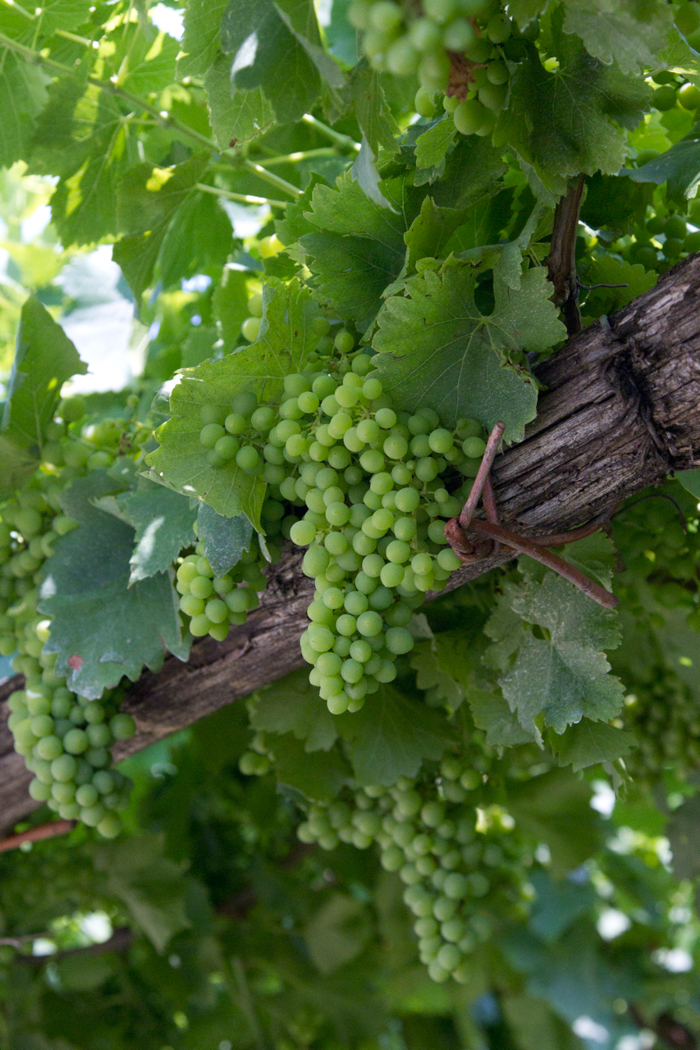
While the history of wine production here is over 4000 years old, the history of Italy as a united country is not. The country of Italy as we know it today is just over 150 years old, with some of the regions in the northeast only included since World War I. Prior to that, portions of Italy floated between various rulers: a local ruling family, the Pope, the French, Spanish, Austria, etc. So the concept of the country of Italy is still a relatively modern entity, and Italians today continue to identify themselves by their home region - Tuscany, Umbria, Sicily - rather than as Italian. This association with a region is reflected in their wine designation.
What is a region?
A region is a first-level administrative division of the modern day state of Italy. There are a total of 20 distinct regions in Italy, I think of them as equivalent to our states. The regions of Italy are: Piedmont, Liguria, Val d’Aosta, Lombardy, Trentino, Alto Adige, Veneto, Friuli Venezia Giulia, Emilia-Romagna, Tuscany, Umbria, Marche, Lazio, Abruzzo, Molise, Campania, Apulia, Basilicata, Calabria, Sicily, Sardinia.
Wine regions in Italy correspond to these administrative regions. Each region has a unique history that is reflected in their distinctive cuisines and indigenous wines. So you will find very different grapes as well as styles of wines as you travel from region to region. The name of the region can be useful in ascertaining what style of wine is inside the bottle, but unfortunately does not always appear on the label.
What is a province?
Within each region, there are sub-districts known as provinces. I think of these as equivalent to our counties. You will occasionally see these indicated on a wine label, often by their two letter abbreviation in parenthesis, for example, (VR) for Verona province in the Veneto region. There are more than 100 provinces in Italy, and sometimes this is the only indication as to what region a wine may be from - again, not particularly user friendly.
What should I look for on the label?
You are browsing the shelves of your local wine store, looking for a new Italian wine to try. You pick up a bottle, and see many Italian (and, in the case of wines from Trentino-Alto Adige, German) words. What do they all mean? What do you look for on the label to help you determine what is inside?
What you will find:
- Producer name
- DOC Designation - Quality level and Name
- Vintage
- Type of wine
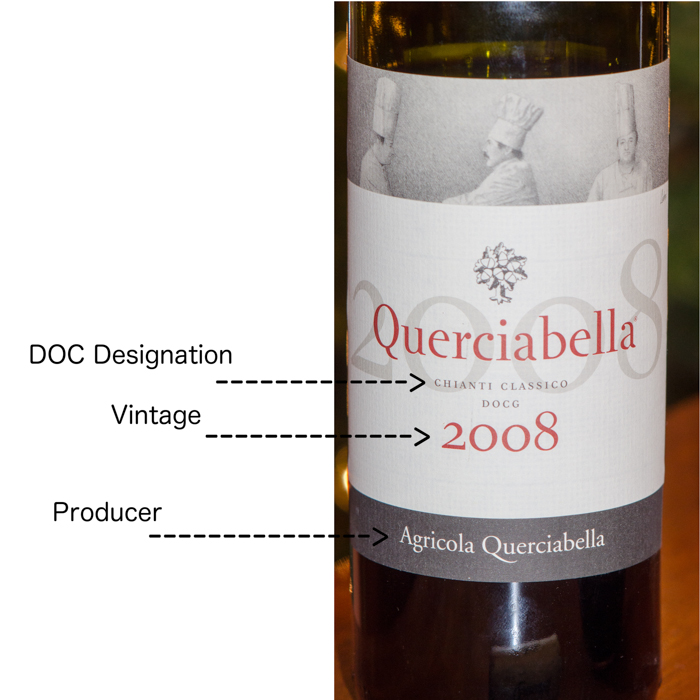
What you may also find: Region and/or province, type of grape.
Producer Name
How do you spot this? As you grow more and more familiar with Italian wines, you will begin to recognize the names of various larger producers, but with over 2 million producers in Italy, you will never know them all. For novices, how do you know which is the producer name?
In Italy, the producer is very often a family name, estate name, farm, or something identifying the land itself. Some tell-tale words to look for:
|
Italian |
English |
|
Abbazia |
Abbey - religious orders often produced wine |
|
Azienda Agricola |
Farm or agricultural company. Often abbreviated as Az. Agr. |
|
Bricco, Bric |
Hilltop vineyard |
|
Campo |
Field |
|
Cantina (Kellerai in Trentino-Alto Adige) |
Cellar. A cantina can be a wine bar, where you can taste wines. When it appears on a wine bottle, it often indicates a consortium of small local growers that pool their resources to produce and market wine. |
|
Casa or Cascina or Ca’(in dialect) |
House. |
|
Castello or Castel |
Castle |
|
Colli or Collina |
Hill |
|
Consorzio |
A consortium of growers |
|
Feudi |
Fief or manor |
|
Fattoria |
Farm or producer |
|
Monte |
Mountain |
|
Podere |
Small farm |
|
Poggio |
Knoll |
|
Produttori |
Manufacturers or producers. Again, this term usually indicates a grower consortium. |
|
Rocca |
Fortified castle |
|
Ronca |
Hillside field for farming |
|
Tenuta |
Estate |
|
Vigneti, vignaiolo |
Vineyards, wine grower |
|
Villa |
Villa |
|
Vinicola, Vitivinicola |
Wine |
DOC Designation - Quality Level and Name
There are 4 levels of quality designation defined by the EU, and implemented in Italy. From lowest to highest:
Vino di Tavola - Table Wine
These are generic wines, with only the color indicated (rosso, bianco). They can be produced anywhere in Italy, from any grape. There is no vintage. When you order the house wine at a trattoria in Italy, this is what you get, usually served in a carafe. In Italy, you will see cantinas advertising ‘vino sfuso’, which translates to ‘loose wine’. You bring in any container you wish, and fill it up at a tap, or even a large pump that resembles a gas pump. This is serving vino di tavola. These wines are everyday drinking wines for most Italians, and are rarely exported.
IGT - Indicazione Geografica Tipica
This designation indicates that a wine is from a particular region, but does not reflect the traditional wine styles of that region. So an IGT wine from Tuscany (or Toscana) is made from grapes grown in Tuscany, but you won’t know what types of grapes are used unless the label specifies them.
IGT wines are not necessarily low quality wines. The world renowned super Tuscan wines, like Tignanello, are IGT. The name super Tuscan was coined in the 70s when wine producers in Tuscany challenged the Chianti wine tradition (Chianti is made with native grapes, primarily Sangiovese), planted international varietals such as Cabernet Sauvignon, Merlot and Cabernet Franc and began producing very high quality Bordeaux style wines.
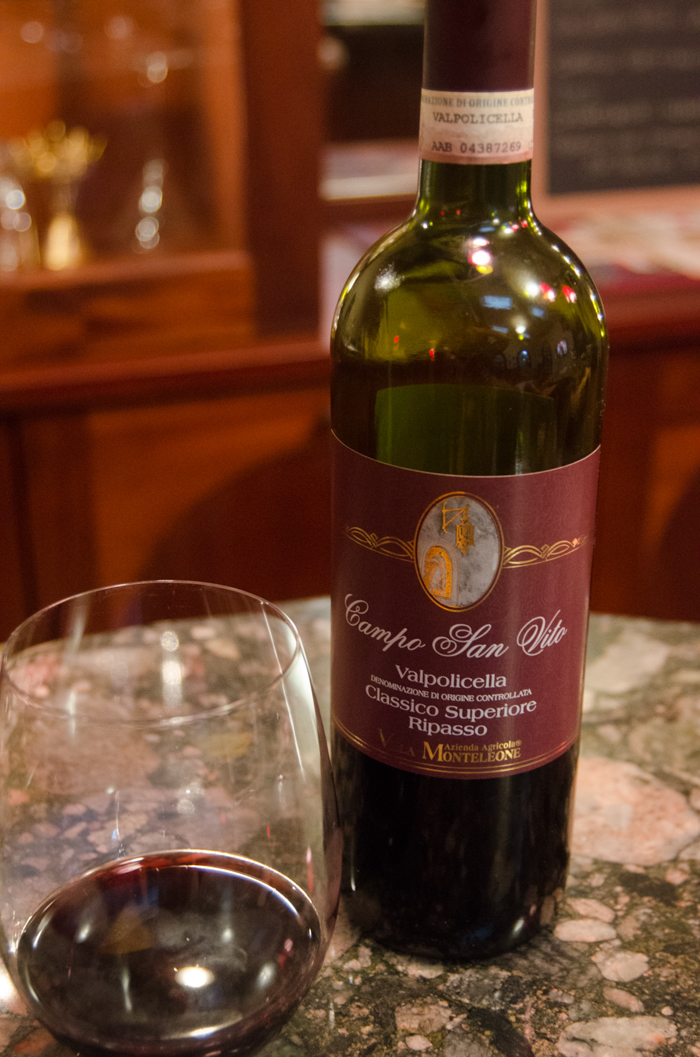
DOC - Denominazione di Origine Controllata
This designation indicates much more precisely the origins and the style of wine. The grapes must come from a very specific zone, usually a handful of smaller communes or municipalities, not as large as a region or even a province. The wines produced from these grapes must be made in the zone itself, and must follow a very precise ‘recipe’ that specifies the grapes used, the yield, the production process, and the required aging.
The number of DOC zones, sometimes also referred to as wine regions, continues to increase, and at the time of this article (2014), numbers well over 300, with the largest wine producing regions being Tuscany, Piedmont and the Veneto. The names of the DOC zones only rarely include the name of the grape; a few that do include Teroldego Rotaliano in Trentino, Barbera d’Asti from Piedmont. Much more commonly, the DOC name derives from the location of the zone. Examples of a couple of DOC zones familiar to us here in the US include:
Chianti DOC - The Chianti wine region lies in central Tuscany, with first mention of a Chianti wine region dating back to 1716, referring to the area near the municipalities of Gaiole, Radda, and Castellina. Today, there are seven sub zones in this region, and the official definition of Chianti consists of at minimum 80% Sangiovese, with permitted blending grapes of native varietals such as Canaiolo and Colorino, as well as other international varieties such as Cabernet Sauvignon and Merlot.
Valpolicella DOC - All wines from this DOC, in the hills east and west of the city of Verona in the Veneto region, are based on the Corvina grape, optionally blended with the following: Rondinella, Molinara, Corvinone, Rossignola, Negrara, Barbera, Sangiovese, even the indigenous grape Oseleta. There are several different styles of Valpolicella wines, ranging from light to full-bodied, dry to sweet to sparkling. The different styles will be identified on the label, and include Valpolicella, Valpolicella Classico, and Recioto della Valpolicella - a sweet dessert wine. The name itself, Valpolicella, is most commonly believed to be derived from Latin and Greek, “valley of many cellars”.
So the DOC zone name does identify the grapes and style of wine, but not in a manner that is easily decoded by consumers unfamiliar with the DOC itself. And with 300 and counting, keeping track of them all is virtually impossible! But don’t feel bad - Italians themselves don’t bother knowing the wines from other regions, except for perhaps the few most prestigious like Tuscany and Piedmonte.
DOCG - Denominazione di Origine Controllata e Guarantita
This is the highest quality designation in Italy, involving the strictest guidelines. In addition to all the rules that define a DOC, DOCG wines usually call for even lower yields, require longer aging, and must pass a final analysis and tasting by an inspector before bottling. To insure it has not been tampered with, each DOCG bottle is sealed with an official numbered government stamp over the cork.
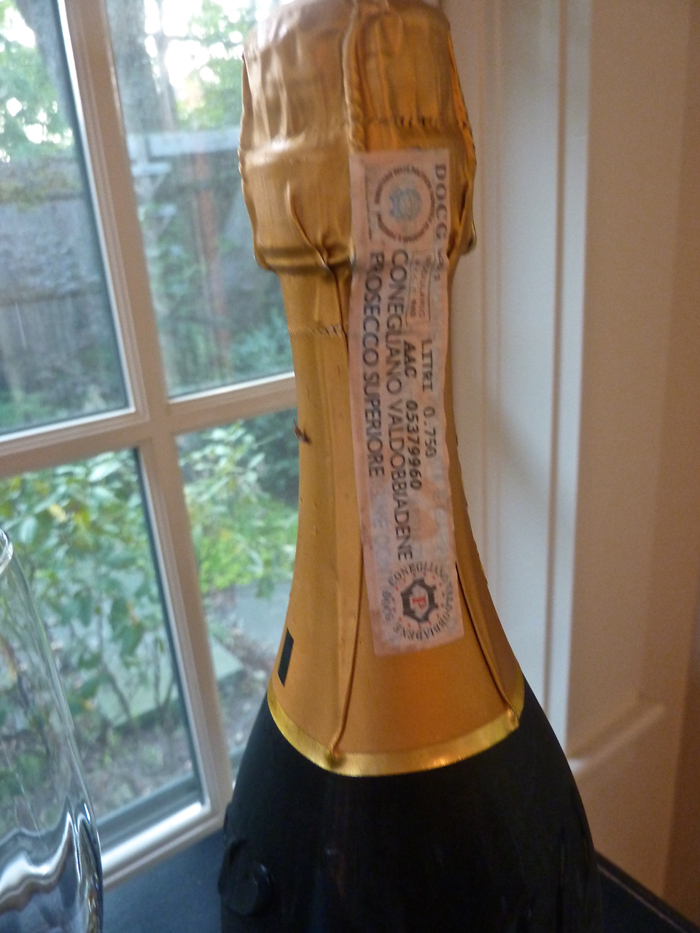
The most prestigious wines of Italy carry the DOCG label, including Barolo (from Piedmont), Amarone (from Veneto), Brunello di Montalcino (from Tuscany). There are over 70 DOCG zones in Italy, and counting.
Vintage
The year the majority of the grapes were grown and harvested.
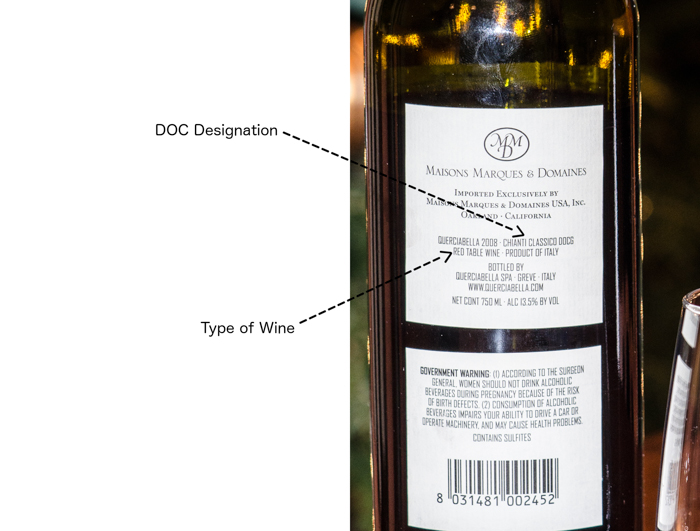
Type of Wine
Red, white, rose, sparkling, dry, sweet. Many options here. On Italian wines imported to the US, this will typically be in English. The table below contains the many terms you might find to describe the type of wine.
|
Italian |
English |
|
Abboccato |
Semisweet |
|
Amabile |
Semisweet |
|
Bianco |
White wine |
|
Brut |
Dry sparkling wine. Extra brut means very dry. |
|
Chiaretto |
A rose wine, typically from Bardolino DOC |
|
Chinato |
Barolo infused with bitter herbs |
|
Classico |
Refers to a specific area within a zone, typically the oldest and original vineyards of the DOC. |
|
Dolce |
Sweet |
|
Fortificato |
Fortified - a wine to which spirits have been added |
|
Frizzante |
Lightly sparkling |
|
Metodo Charmat |
Method of producing sparkling wine, in which secondary fermentation occurs in a pressurized tank. Used for prosecco. |
|
Metodo Classico |
Traditional method of producing sparkling wine, used to make Champagne. Secondary fermentation takes place in the bottle. |
|
Millesimato |
Wine produced from a single vintage. Most sparkling wines are produced from grapes from multiple years. Millesimato spumante wines are produced from grapes grown in a single year. |
|
Passito |
Sweet wine from semidried grapes |
|
Recioto |
Sweet wine from semidried grapes |
|
Riserva |
A DOC/G wine that has met a minimum requirement for additional aging. |
|
Rosato |
Rose wine |
|
Rosso |
Red wine |
|
Secco |
Dry. |
|
Spumante |
Sparkling wine. |
|
Superiore |
A DOC/G wine that meets certain higher standards - often associated with higher alcohol and extended aging. |
|
Tranquillo |
Still |
|
Vecchio |
Aged. |
|
Vendemmia Tardiva |
Late harvest |
|
Vin Santo, Vino Santo |
“Holy Wine”. A sweet wine made from dried grapes. |
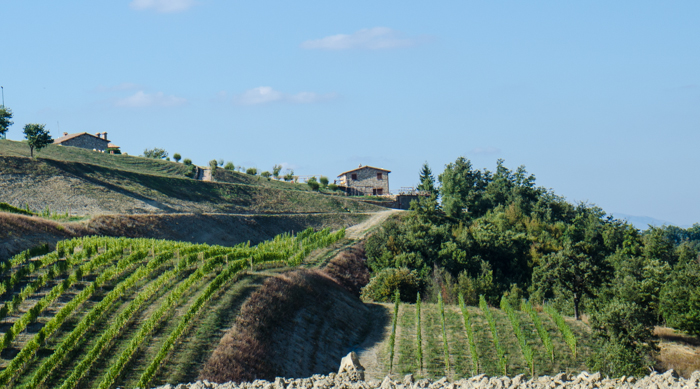
Wine production dates back to ancient times in Umbria. Archaeological artifacts show evidence that the Etruscans engaged in viticulture along the banks of the Tiber River well before the Romans came to this region. The Romans did soon, however, develop a taste for these wines. Around the 12th century, Orvieto was a summer retreat for the Popes, and the then thick, sweet white wine from this area was shipped daily for Rome.

Umbria is landlocked, and enclosed on three sides by the Apennines mountains, but the many rivers that flow through the region bring with them warmer air from the Mediterranean. The interplay of these warmer air currents with the cool air that flows down from the Apennines provides the ideal environment for viticulture. But winemaking in Umbria has always competed with olive oil production and grain cultivation, so Umbrian wines are still hard to come by outside of the region.
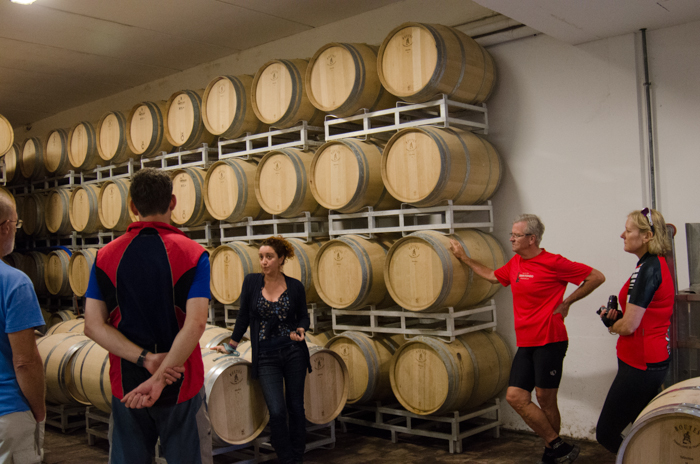
Centuries ago, the grapevines were interspersed among trees such as maple, elm, and even olive. The trees acted as natural trellises, raising the grapes off the ground so they could ripen without rotting. As recently as the 1970s, wine production in Umbria was basically a farmhouse operation making wines for local consumption. That changed with the emergence of Lungarotti, who was the first Umbrian wine maker to become a true commercial entity. Today, Lungarotti produces close to 3 million bottles of wine a year, and famous names are investing in the region, such as La Fiorita-Lamborghini and Tuscan producer Antinori. During our visits, we see acres of vineyards devoted to ‘monoculture’ of grapes using formal trellis systems throughout Umbria’s now 13 DOC and 2 DOCG wine zones.
The Wine Zones of Umbria
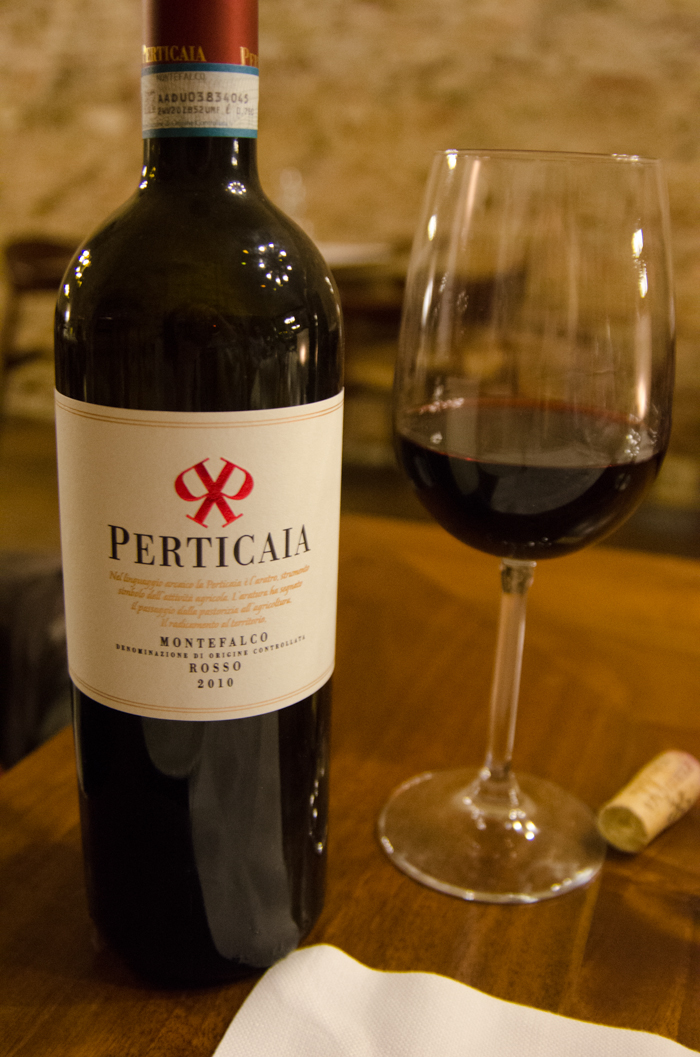
Sagrantino di Montefalco DOCG
Torgiano Rosso Riserva DOCG
Assisi DOC
Colli Altotiberini DOC
Colli Amerini DOC
Colli del Trasimeno DOC
Colli Martani DOC
Colli Perugini DOC
Lago di Corbara DOC
Montefalco DOC
Orvieto DOC
Rosso Orvietano DOC
Spoleto DOC
Todi DOC
Torgiano DOC


